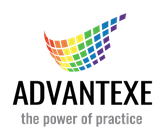From Pandemic to Permanent: Using the Hybrid Work Model Effectively in Your Organisation
Written by Robert Kovach. First posted January 14, 2022.

Over the last two years, we’ve obviously moved aggressively and suddenly from on-site work to remote work. And although work from home arrangements were already growing rapidly before the pandemic, COVID-19 wildly accelerated that trend. And I do mean wildly, as in somewhat unplanned, mostly reactionary and not without a bit of chaos. This isn’t meant to blame anyone – a rapid response to a public health emergency was far more important than thoughtful, planned schemes to shift a workforce from offices to dining tables. But it’s clear those temporary changes have hardened into a new reality. Employees are not nearly as willing to be in a five day a week office role as they were in the past. Part of that is ongoing concerns about COVID. Part of that is a shift in worker expectations. But there’s no going back, according to research predicting a future workplace that looks very different.. For those who are responsible for running organisations, it’s time to not only accept the demands coming out of The Great Resignation, it’s time to lean into them. But a full time, 100% work from home organisation is not optimal – or even feasible – for many employers. However, a hybrid work model is very likely the future for many companies, at least for some employees.
The hybrid work model can be a win-win situation for employers (and employees).
Thinking permanently, not pandemic-ly. Do a full assessment of the changes you have made during the last two years to accommodate the sudden work from home arrangements. Now is the time to actively adjust your operations and your culture to make those new arragements permanent. Some changes can simply be left as the new status quo. Others are probably too expensive, too unreliable or just not the optimal way of meeting the needs of your clients and suppliers long term.
One size won’t fit all. One of the first steps of re-assessing your workforce and your operations is to review all the roles in the business. Determine who must work on site and who can work remotely. Think aggressively about the first category in terms of “must”– the last two years have redefined what has to happen in person. The Great Resignation is proving that on-site employment opportunities will be the hardest to fill. The leaders who embrace virtual ways of doing things, and learn to do them well as an organisation, will thrive in this new moment, as well as long term. Can they be on-site part of the time, or do work in shifts so that there are fewer people in the office (or warehouse or wherever) at the same time? The hybrid work model doesn’t have to mean full days on and full days off. Think in terms of activities, not people. Can part of the role be performed remotely?
On the other hand, when it comes to who can work remotely, think aggressively in a different way. While many workers right now want to work from home full time, there will be a point at which some of the disadvantages of losing in-person interactions will be felt. This is where hybrid work arrangements could be better than fully working from home. Do this smartly, in a way that works for both the organisation and the individual. For example, many people are moving farther away from city centers so they can find more affordable and more spacious housing. Before the pandemic, the average commute in the U.S. was 50 minutes round trip; in the U.K. it was an hour. But that was based on commuting twice per day, five days per week, 45-50 weeks per year. What if you only need people in the office three days per week? Or even two days per week? If you offered an employee a schedule of Tuesdays and Wednesdays in the office, then even a one hour drive each way feels far less arduous.
Make hybrid worth the hype. Employers who go all-in on the new way of working should be broadcasting these changes as a way of attracting talent. That is yet another new dynamic for employers — learning to pitch the advantages of working for your company. We’ve spent most of human history with the employment relationship relying on two things: 1) money to be the incentive for working and 2) retirement to be the time for prioritizing personal interests over professional. But people are valuing different things now – time with their loved ones, opportunity to explore other interests, and generally enjoying their personal interests now, not after their working years are over. I have written before about the importance of demonstrating . Employers who articulate how a hybrid work model will allow people to enjoy the important emotional and logistical advantages of being in the office, while also articulating a culture that recognises the value of working from home are likely to find a competitive advantage in recruiting and keeping talent.
Hybrid work models require changing attitudes, not just locations
Corporate culture also must reflect a commitment to a hybrid work arrangement. This means changing policies and benefits to support (not just accommodate) team members who are splitting time between an office site and a home office. That might mean giving people subsidies to help create a permanent home office workspace, or moving from gym membership subsidies to offering at-home equipment corporate discounts. Implement new policies that reflect at-home employment – for example, you could hold all key meetings between 10 and 3, when most people with school age children will be less distracted. Invest in technology that makes sure out of sight doesn’t lead to out of mind. And make sure that time in the office leverages the very real benefits of human contact. Team bonding, mentoring and building relationships do get a boost from in-person connections, so make in-office days more than just an extension of the work people are doing from home. Maybe some teams only need to be in the office one week per month instead of two days each week. Involve your teams in these decisions – it communicates the organisation’s commitment to this model. Commit to your talent, and they will more likely return the favour.
Source: https://robert-kovach.com/2022/01/14/from-pandemic-to-permanent-using-the-hybrid-work-model-effectively-in-your-organisation/







